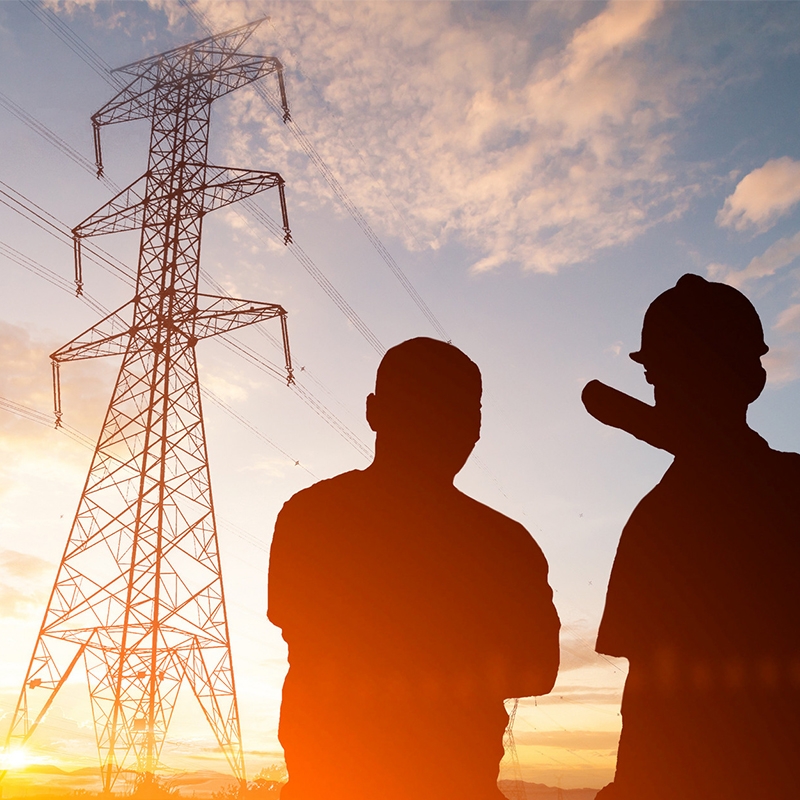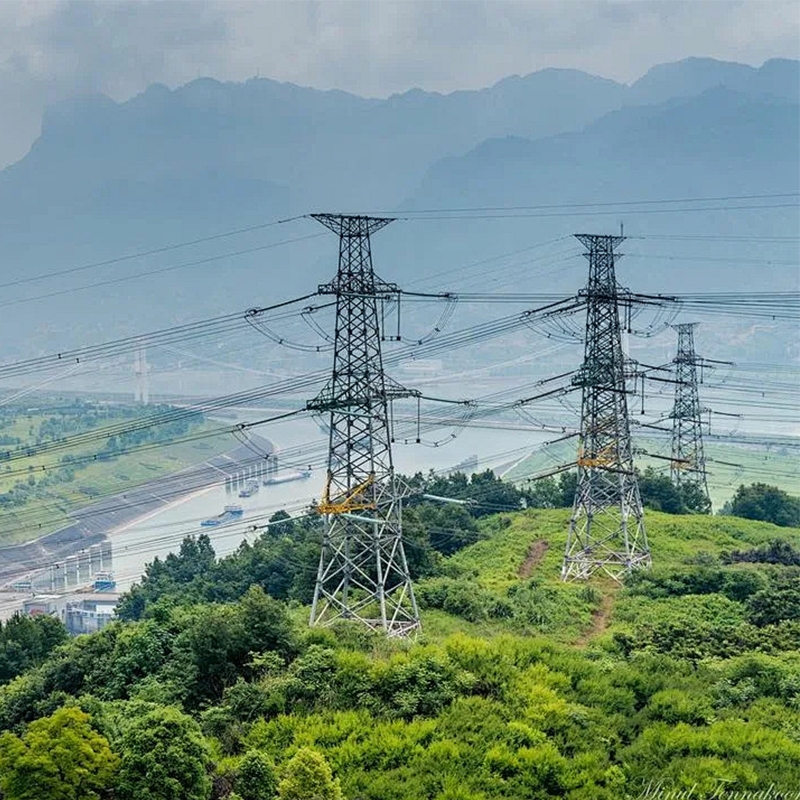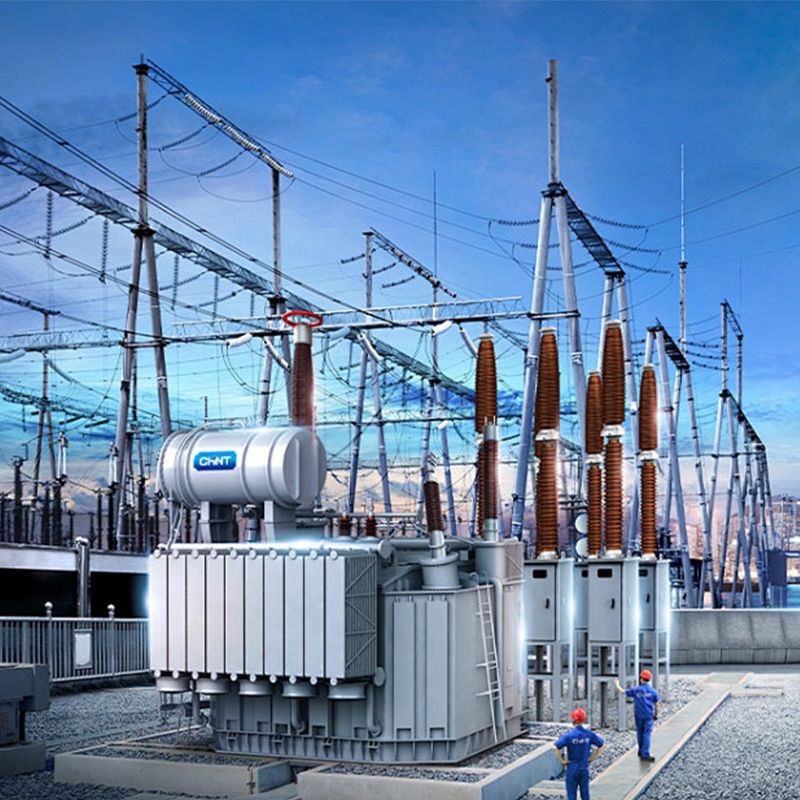Electrical Trivia | Basic Knowledge of Dry-type Transformers
1.0-40(℃), relative humidity <80%
2. Altitude: No more than 2,500 meters;
3. Avoid exposure to rain, moisture, high temperature, extreme heat or direct sunlight. The distance between its heat dissipation and ventilation holes and the surrounding objects should be no less than 40cm.
4. Prevent working in places with a large amount of corrosive liquids or gases, dust, conductive fibers or fine metal shavings; 5. Prevent working in places with vibration or electromagnetic interference;
6. Avoid long-term inverted storage and transportation, and do not subject to strong impacts.
Wiring method
Short-circuit the "input" and "output" terminals of the transformer and use a megohmmeter to test the insulation resistance between them and the ground wire. When measured with a 1000V megohmmeter, the resistance value is greater than 2M ohms.
2. The cross-sectional wiring of the input and output power lines of the transformer should meet the requirements of their current values. It is advisable to configure it according to A current density of 2-2.5A/min ².
3. The input and output three-phase power lines should be connected to phase A, phase B and phase C respectively according to the colors of the busbars on the transformer terminal board, which are yellow, green and red. The neutral wire should be connected to the neutral neutral wire of the transformer transformer, and the grounding wire, the transformer casing and the center point of the transformer should be connected. The ground wire and neutral wire we usually talk about are both led out from the neutral point of the transformer. If the transformer has a box, it should be connected to the corresponding ground wire mark of the box.
Check the input and output lines and confirm that they are correct.
4. First, power on the device without load and observe whether the input and output voltages meet the requirements. At the same time, observe whether there are any abnormal sounds, sparks, odors or other abnormal phenomena inside the machine. If any abnormality is found, please immediately cut off the input power supply.
5. Only after the no-load test is completed and normal can the load be connected.
Installation Points
Distribution transformers are important components of substations. Dry-type transformers without enclosures are directly installed on the ground, with protective barriers added around them. Dry-type transformers with enclosures are directly installed on the ground. Its installation can be referred to the national architectural standard design atlas. Layout of 03D201-410/0.4kV transformer room and installation of common equipment components in substations.
Related to selection
Temperature control system
The safe operation and service life of dry-type transformers largely depend on the safety and reliability of the transformer winding insulation. One of the main reasons why transformers cannot operate normally is that the winding temperature exceeds the insulation tolerance temperature, causing insulation damage. Therefore, the monitoring of the operating temperature of transformers and its alarm control are of great significance. (1) Automatic control of the fan: The temperature signal is measured by the Pt100 thermistor pre-embedded at the hottest part of the low-voltage winding. When the transformer load increases and the operating temperature rises, when the winding temperature reaches 110℃, the system automatically starts the fan for cooling. When the winding temperature drops to 90℃, the system automatically stops the fan.
⑵ Over-temperature alarm and tripping: The temperature signal of the winding or core is collected by the PTC nonlinear thermistor pre-embedded in the low-voltage winding. When the temperature of the transformer winding continues to rise and reaches 155℃, the system outputs an over-temperature alarm signal. If the temperature continues to rise to 170℃, the transformer can no longer operate. An over-temperature trip signal must be sent to the secondary protection circuit, and the transformer should trip quickly.
⑶ Temperature display system: The temperature change value is measured by the Pt100 thermistor pre-embedded in the low-voltage winding, directly displaying the temperature of each phase winding (three-phase inspection and maximum value display, and can record the historical highest temperature). The highest temperature can be output as 4-20mA analog quantity. If it needs to be transmitted to a remote computer (up to 1200m distance), it can be transmitted
Protective method
Usually, an IP20 protective housing is selected, which can prevent solid foreign objects larger than 12mm in diameter and small animals such as rats, snakes, cats and birds from entering, causing serious faults such as short circuits and power outages, and providing a safety barrier for live parts. If the transformer needs to be installed outdoors, an IP23 protective housing can be selected. In addition to the above-mentioned IP20 protection function, it can also prevent water droplets within a 60° Angle to the vertical line from entering. However, the IP23 enclosure will reduce the cooling capacity of the transformer. When choosing it, attention should be paid to the reduction of its operating capacity.
Overload capacity
The overload capacity of dry-type transformers is related to the ambient temperature, the load conditions before overload (initial load), the insulation and heat dissipation conditions of the transformer, and the heat generation time constant, etc. If necessary, the overload curve of the dry-type transformer can be obtained from the manufacturer.
Inspection method
1. Are there any abnormal sounds or vibrations?
2. Is there any local overheating? Discoloration caused by corrosion by harmful gases and other factors, such as creepage marks and carbonization phenomena on the insulation surface.
3. Whether the air-cooling device of the transformer is operating normally.
4. There should be no overheating at the high and low pressure joints. There should be no leakage or creepage at the cable head.
5. The temperature rise of the windings should be monitored based on the grade of insulation materials used in the transformer. The monitored temperature rise must not exceed the specified value. 5. The porcelain vase should be free of cracks. Discharge marks.
Youdaoplaceholder0 Check if the windings are loose.
8. The indoor ventilation and the air ducts of the iron core should be free from dust and debris blockage, and there should be no rust or corrosion on the iron core, etc.
Application status
Since dry-type transformers do not contain oil, they do not have problems such as fire, explosion or pollution. Therefore, electrical codes and regulations do not require dry-type transformers to be placed in a separate room. The loss and noise have been reduced to a new level, creating conditions for the transformer and the low-voltage screen to be placed in the same distribution room.
The annual output of resin-insulated dry-type transformers in China has reached 10,000 MVA, making it one of the countries with the largest production and sales volume of dry-type transformers in the world. Dry-type transformers are now widely used in almost all electrical systems such as power stations, factories and hospitals. With the promotion and application of the SC(B)9 series, which features low noise (the noise of distribution transformers below 2500kVA has been controlled within 50dB) and energy conservation (the no-load loss has been reduced by up to 25%), the performance indicators and manufacturing technologies of dry-type transformers in China have reached the world's advanced level.
Related development
With the promotion and application of dry-type transformers, their production and manufacturing technologies have also made considerable progress. It can be predicted that dry-type transformers will achieve further development in the following aspects in the future:
(1) Energy conservation and low noise: With the introduction of new materials, new processes and new technologies such as low-consumption silicon steel sheets, foil winding structures, stepped core joints, environmental protection requirements, in-depth noise research, and computer-optimized design, future dry-type transformers will be more energy-efficient and quieter.
⑵ High reliability: Improving product quality and reliability will be people's unremitting pursuit.
⑶ Environmental protection characteristic certification: Based on the European standard HD464, research and certification on the weather resistance (C0, C1, C2), environmental resistance (E0, E1, E2), and fire resistance (F0, F1, F2) characteristics of dry-type transformers are carried out.
⑷ Large capacity: From dry-type transformers mainly featuring 50 to 2,500 kVA distribution transformers to Power Transformers ranging from 10,000 to 20,000 kVA/35kV, with the continuous increase in urban electricity load, urban grid area substations are increasingly penetrating into load centers such as urban central areas, residential communities, and large factories and mines. 35kV large-capacity power transformers for central power supply in residential areas will be widely applied. ⑸ Multi-functional combination: Evolving from a single transformer to a multi-functional combination transformer featuring air cooling, protective enclosures, temperature computer interfaces, zero-sequence transformers, power metering, enclosed busbars, and side outgoing lines. It can be predicted that the distribution transformers in the 21st century will belong to the resin-insulated dry-type transformers with superior performance, low noise and energy saving.




